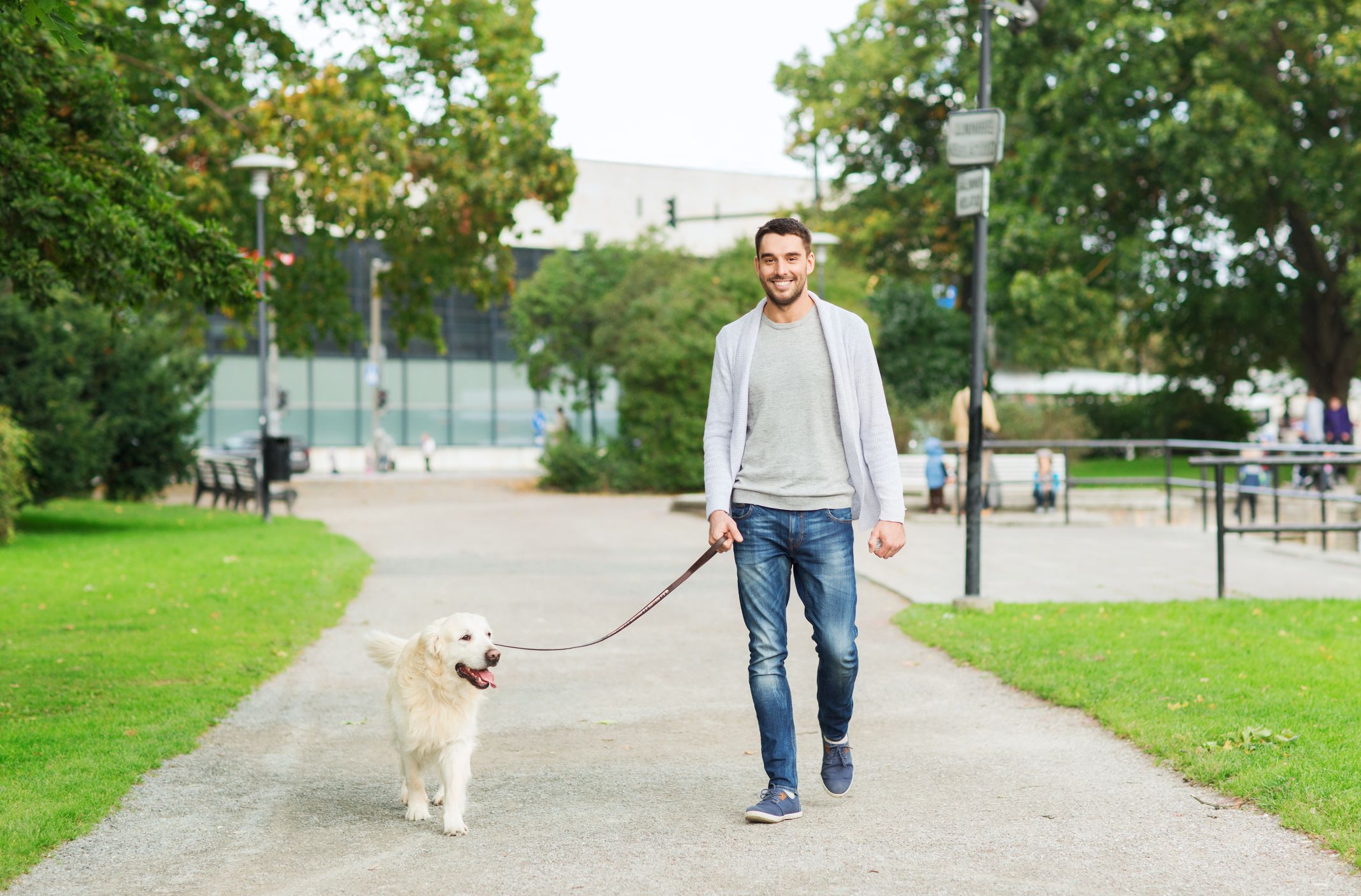
According to your dog, there are few things better than going for a walk. Not only does a bit of exercise improve his physical health, but it also reduces any unwanted behaviors like boredom, aggression, or destruction. Getting those legs moving solves most potential problems, but establishing a pattern can be easier said than done. With our suggestions, walking your dog has never been more fun, safe, or valuable.
A Solid Foundation
Daily exercise fortifies your dog’s mental and physical health, but she largely depends on you to provide her with opportunities to experience new smells, sounds, and sights. Beyond the critical nature of getting outside to potty, dogs must get the ya-ya’s out before day’s end. Without access to vigorous exercise, most pups suffer from depression, weight gain, and a whole host of associated issues.
But Wait, There’s More!
There is another important layer of walking your dog that cannot be underestimated. When out and about, your dog gains confidence through exposure to other pets and people. Socialization is necessary for your dog’s emotional development, and provides them with tools to get through future encounters.
Socially Responsible
If they haven’t learned commands like “down,” “sit,” “heel,” and “come,” you could be headed for disaster. Walking your dog shouldn’t alter good relationships with your neighbors or negatively impact others (your dog included!).
Positive Reinforcement
Teach your dog life-saving commands. With time, patience, consistency, and determination, your dog will show mastery of basic obedience. Walking your dog is much more challenging without commands; however, you can begin to use commands during walks. Bring lots of high-value treats to bolster your approach to positive reinforcement training.
Walking Your Dog
The following might seem like no-brainers, but serve to boost fun and safety measures when walking your dog:
- Always use a leash, ideally 4-6 feet in length. Retractable leashes are often hazardous, especially when used before you establish full obedience training.
- Never forget the waste removal bags! Scooping dog poop is an absolute must. Not only is it unsightly to leave behind, but it can spread diseases or parasites to other animals and people.
- Never assume your dog’s attention will be welcomed by unfamiliar individuals. Always ask permission if your dog can visit with other people and their pets. Likewise, it’s acceptable to request a big space bubble for your dog, if applicable.
- Always follow the rules in public places and be mindful of boundaries. Trespassing is never a good idea when walking your dog.
- Mind the weather and plan accordingly. Do not allow your dog to stay outside in extreme temperatures.
- Don’t forget water. If they are thirsty enough, your dog might find themselves lapping up puddles with run-off chemicals in them.
- Stay safe with appropriate lighting if walking before dusk or after sunset. Outfit your dog with their own lights on the collar or leash.
- Try to keep up the same routine every day. If you cannot make it home by the time your dog anticipates a good walk outside, enlist the help of a friend or neighbor.
Remember, a tired dog is a happy one. Aim for at least one thirty-minute walk every day (sometimes two walks is better). Younger or herding breeds will benefit from additional exercise.
If you have any questions or concerns about walking your dog, please call us at (732) 677-2180. Our veterinarians and staff members are always here for your dog at True Care Veterinary Hospital.

